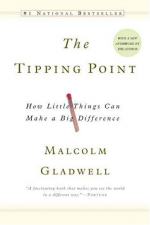
|
| Name: _________________________ | Period: ___________________ |
This test consists of 15 multiple choice questions and 5 short answer questions.
Multiple Choice Questions
1. What does the author consider to be the third of the three rules of epidemics?
(a) The Stickiness Factor.
(b) The Law of the Many.
(c) The Power of Context.
(d) The Law of the Few.
2. What brand of cigarettes became sticky when they used a grammatical faux pas in an advertising campaign according to the author in Chapter 1?
(a) Camel.
(b) Marlboro.
(c) Skydancer.
(d) Winston.
3. What was the nickname of Darnell McGee?
(a) “Big Man.”
(b) “Boss Man.”
(c) “Pawn Boy.”
(d) “Skater.”
4. On what television station does Blue’s Clues air?
(a) The Disney Channel.
(b) National Educational Television.
(c) Nickelodeon.
(d) Public Broadcasting Station.
5. What refers to a neuron that fires both when an animal acts and when an animal observes the same action performed by another?
(a) Mirror neuron.
(b) Atomic neuron.
(c) Mimicry neuron.
(d) Neuron reverberation.
6. The author states that the tipping point for Hush Puppies Shoes came between what years?
(a) 1994-1995.
(b) 1958-1959.
(c) 1987-1988.
(d) 1961-1962.
7. When was Paul Revere born?
(a) 1756.
(b) 1719.
(c) 1734.
(d) 1689.
8. What designer put a twenty-five foot Bassett hound on the roof of his Hollywood store, according to the author in the Introduction?
(a) Joel Fitzgerald.
(b) Oscar de la Renta.
(c) John Bartlett.
(d) Isaac Mizrahi.
9. According to Gladwell, stickiness measures the degree to which a product or idea does what?
(a) Conveys a message.
(b) Stays with the audience.
(c) Instigates change.
(d) Culminates in stasis.
10. What was the cause in the spike of syphilis cases in Baltimore, according to the Centers for Disease Control?
(a) Rat infestation.
(b) AIDS.
(c) Heroin.
(d) Crack cocaine.
11. Darnell McGee is known to have infected over how many people with HIV?
(a) 30.
(b) 300.
(c) 100.
(d) 2.
12. Not only do connectors know many people; they also operate in a variety of what, according to the author?
(a) Platitudes.
(b) Countries.
(c) Government offices.
(d) Social niches.
13. On what date does the author describe a young boy overhearing news of the British invasion in Chapter 2?
(a) September 16, 1776.
(b) June 16, 1775.
(c) April 18, 1775.
(d) July 4, 1776.
14. When did the show Sesame Street premiere?
(a) 1985.
(b) 1981.
(c) 1975.
(d) 1969.
15. The author describes an advertising agent for Columbia Record Club who encouraged viewers to look for what in the magazine ads in Chapter 3?
(a) A treasure box.
(b) A c.d. sample.
(c) A concert ticket.
(d) A phone number.
Short Answer Questions
1. Sesame Street premiered on what television station?
2. What leading epidemiologist theorizes that the syphilis epidemic in Baltimore was caused by the diminishing of public housing?
3. In Gladwell's example from Chapter 3, the researchers at Sesame Street showed an episode where a character danced around and letters entered from various points of the screen. Though the episode held the children's attention, the eye movement sensor found that the children watched what?
4. Kitty Genovese was stabbed to death in what neighborhood of Queens, New York?
5. Early research for Sesame Street showed that flashing lights and bright colors do not do what on their own?
|
This section contains 480 words (approx. 2 pages at 300 words per page) |

|




